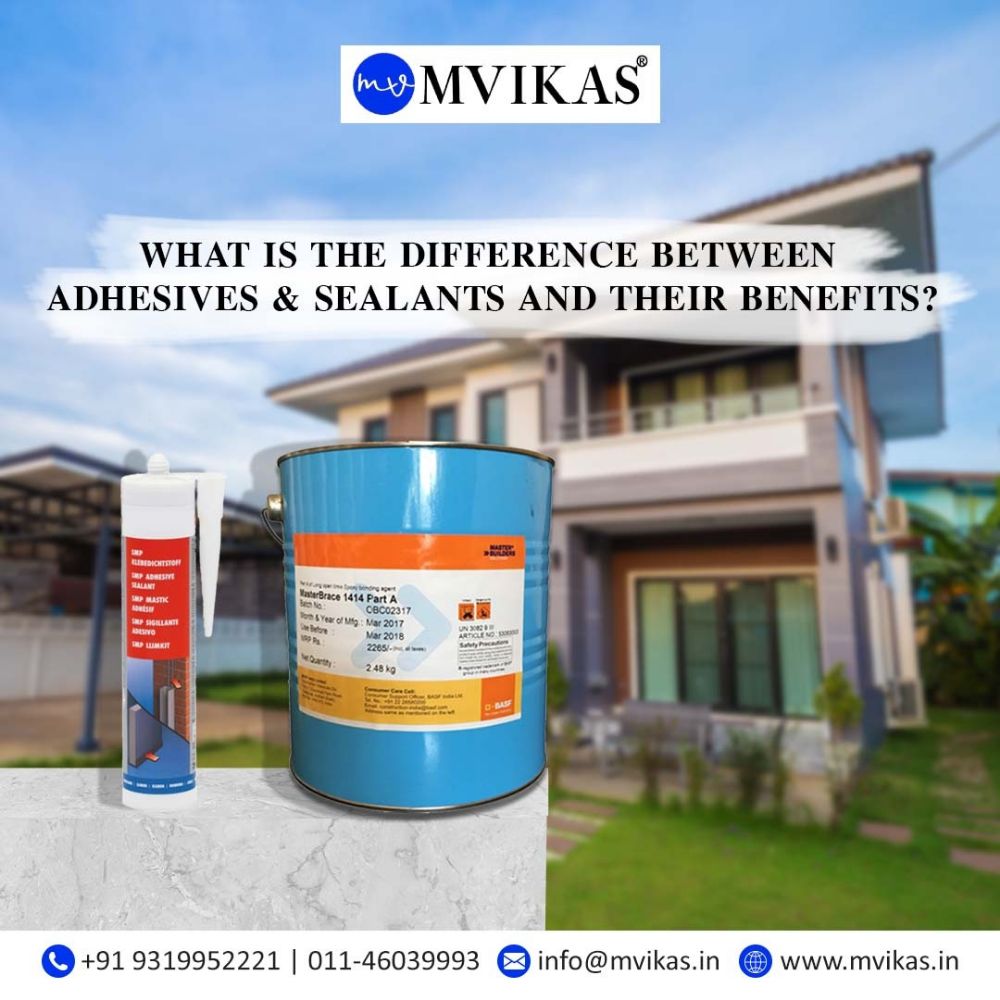Reachable at 9560662883  011-46039993 (Ext. 21 to 32) (10am - 06pm)
011-46039993 (Ext. 21 to 32) (10am - 06pm)
What is the Difference Between Adhesives & Sealants and Their Benefits?

When considering how to assemble their products, many design engineers have a fundamental question: What are the distinctions between adhesives and sealants, what tasks are they best suited for, and how does one choose which ones to use for which materials and applications? The distinctions between adhesives and sealants are only sometimes readily apparent because they might occasionally be constructed of comparable materials and need similar processing durations.
Benefits of Adhesives
Over the previous few decades, adhesive science and technology have grown significantly and are still developing today. While there are many ways to create items, 3M adhesives and tapes have distinct advantages over mechanical and welding fastening.
- Adhesives bind disparate and challenging materials
In order to lessen or stop bimetallic corrosion, which frequently happens between various types of metal, adhesives and tapes act as a barrier. Hard-to-bond materials like silicone rubber, greasy metal, and low-surface energy polymers can be joined using adhesives.
- Adhesives bind and seal at the same time
It helps to seal out water, moisture, dirt, and other environmental pollutants when adhesives are used to join two surfaces. There is no need for a different mechanical fastening because the seal possesses sticky characteristics.
- The stress concentration at screw and rivet locations is decreased by adhesives
Drilling holes is necessary for mechanical fastening, and connection at each hole focuses force there. As opposed to bonding at specific spots, adhesives and tapes spread the weight throughout the whole bond region.
- Adhesives can affect how productive a process is
By removing processes, failure rates, and assembly time, using adhesives and tapes in the manufacturing process can increase productivity. Adhesives and tapes can speed up processes, cut costs, shorten work days, and simplify processes.
Benefits of Sealants
We want to propose using silicone sealants if you want to build lasting bonding. The stability of silicone sealants is unaffected by extremely hot or low temperatures. Builders and others in the building business wish to utilize them because of their "Stability Factor."
- The capacity to endure both high and low temperatures superior to Organic Rubber
Compared to rubber sealants, silicone sealants are far more able to endure temperature changes. They bind almost any material together, making them a better alternative. They are a desirable building material since they are also resistant to thermal expansion and contraction, wind oscillation, and even seismic movement.
- Sealants made of silicone are great insulators
Flexible and long-lasting silicone sealants are better than other materials for insulating homes from high heat and cold. They are more durable than standard rubber sealants due to their resilience at high and low temperatures.
- Exceptionally Strong and Form-Tight Seals
In the building sector, durability is essential. You want your work to last, whether repairing a bathroom sink or caulking the gap between windows or doors. Silicone sealants guarantee it. Compared to rubber seals, silicone sealants provide tight seals that are far more difficult to pry apart. As a result, they last four times as long.
- Cost-Effective
The affordability of utilizing sealants is another significant benefit. For your commercial needs, you may get a variety of adhesives at affordable pricing. You can get the appropriate materials for your products by selecting a dependable provider. High-quality sealants, when applied correctly, may save your operating expenses by increasing the efficiency and dependability of your machinery and staff. Additionally, you may receive these chemicals for wholesale costs when you get them from a reputable seller.
You can purchase the products in large amounts if you utilize them in your business, saving you money.
- Several Options are available
You have a wide range of alternatives regarding the many types of sealants on the market. Some sealants are silicone-based, while others are water-based. The most important thing to remember is that the stronger the glue and sealant, the better it will work for your company.
Differences between Adhesives and Sealants
- Strength
Adhesives
Compared to sealants, adhesives have better shear strength and a smaller elongation at break. In general, sealants have less than 1000 psi of lap shear strength, while adhesives often have above 1000 psi. Adhesives' higher cohesiveness, or the degree to which their molecules are attracted to one another more strongly, accounts for this. Due to their weaker cross-linked molecular structure, sealants typically don't offer enough bonding power to hold two substrates together.
As a result of their stronger bond, adhesives are generally bonds.
Sealants
Due to their weaker cross-linked molecular structure, sealants typically don't offer enough bonding power to hold two substrates together due to their stronger bond; adhesives generally bond. Under a load, sealants are susceptible to creep (deformation).
- Flexibility
Adhesives
More rigid than sealants.
Sealants
Adhesives are less flexible than sealants. The elastomer that sealants often include gives them a paste-like consistency.
- Gap-Filling
Adhesives
Due to their continued viscosity and incomplete solidification, pressure-sensitive adhesives are not the best for gap filling and encapsulation.
Sealants
Sealants are better at sealing tiny gaps between surfaces and components because they shrink at more excellent rates than other materials.



Leave your comment